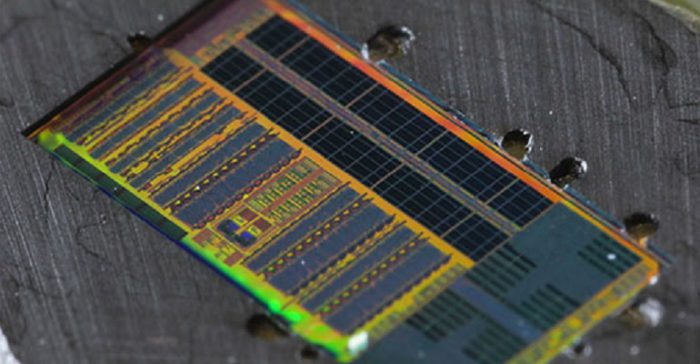Light Chips Could Mean More Energy-Efficient Data Centers
MIT Technology Review, December 23, 2015. Image credit: Glenn Asakawa, University of Colorado
Now a prototype described in the journal Nature offers a promising and practical approach. The electronic-optical microprocessor, developed by a group of researchers at MIT, the University of California, Berkeley, and the University of Colorado, Boulder, integrates over 70 million transistors and 850 optical components. The system uses optical fibers, transmitters, and receivers to send data between a processor chip and a memory chip. In a demo, it runs a graphics program to display and manipulate a 3-D image, a task that requires using the internal optical connections to fetch data from memory and run instructions.
Optical connections can carry more data faster than electrical ones consuming the same amount of power. The data transfers in the prototype occurred at a rate of 300 gigabits per second per square millimeter, which the researchers say is 10 to 50 times the rate for a comparable off-the-shelf electronic microprocessor. That boost in bandwidth could save a lot of energy in data centers, says Chen Sun, a researcher at the University of California, Berkeley. He estimates that 20 to 30 percent of the energy used in data-center servers is spent transferring data between processor, memory, and networking cards. According to an analysis by the Natural Resources Defense Council, data centers in the United States will consume 140 billion kilowatt-hours of electricity a year by 2020, costing $13 billion and emitting 100 million metric tons of carbon.
While optical connections are widely used for long-distance telecommunication connections, bringing them into servers and onto chips has been difficult. Optical components have been expensive to make, requiring dedicated processes and materials that are tricky or impossible to integrate into existing semiconductor production lines.
